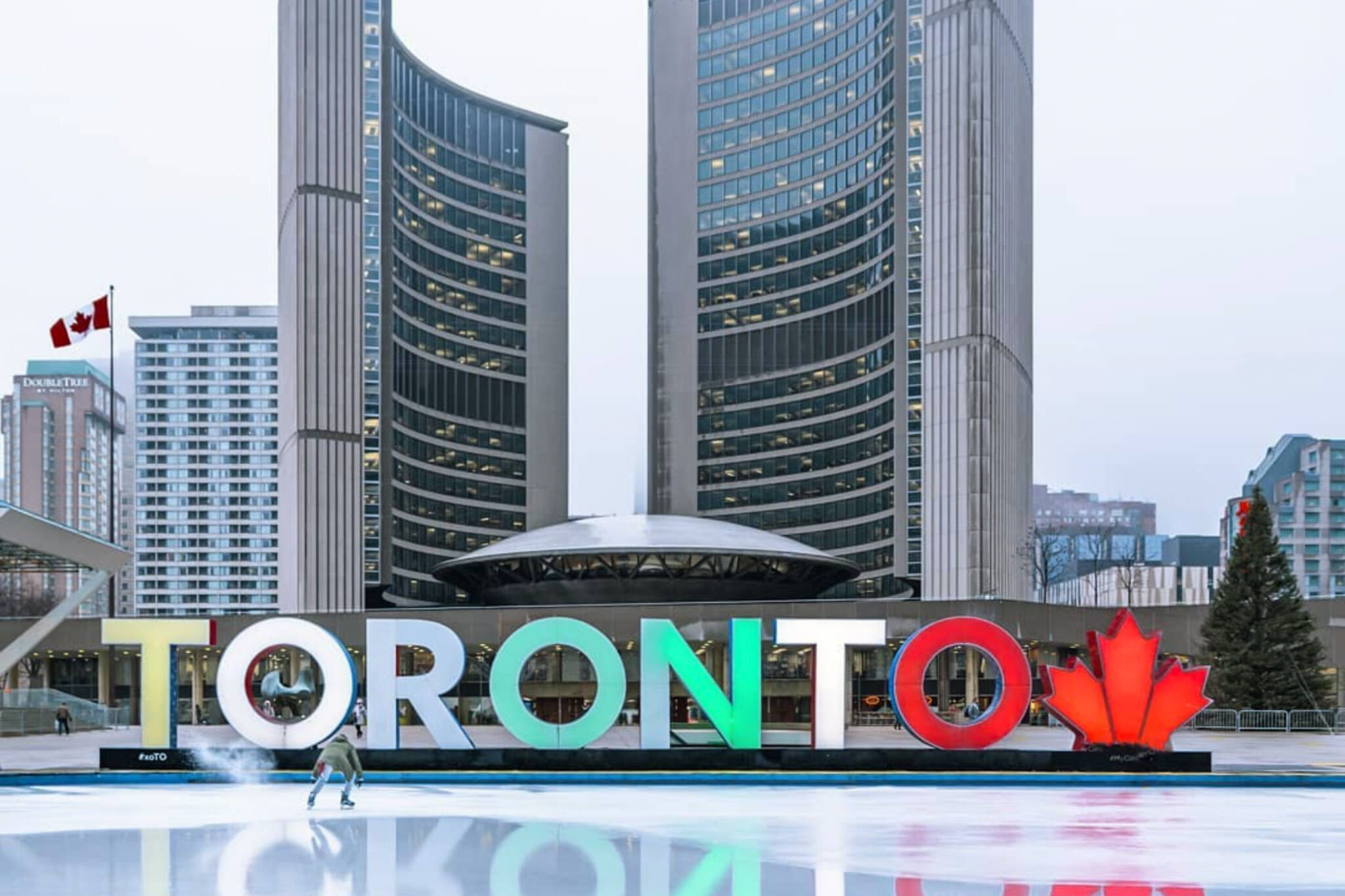
How Toronto got its name
The name Toronto was first applied to a narrow stretch of water between Lake Simcoe and Lake Couchiching.
The word, Anglicized from Mohawk, was spelled tkaronto and taronto and used to describe an area where trees grow in shallow water.
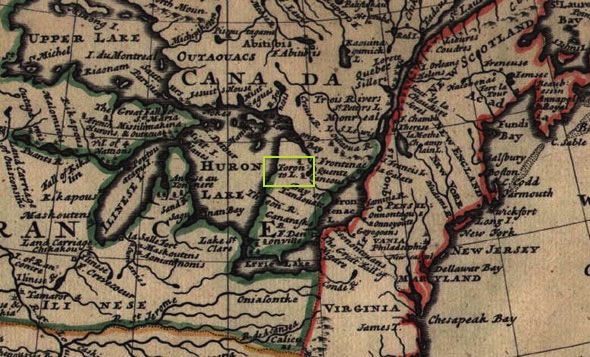
Evidence of early usage of the Taronto.
The name, misunderstood and confused by various old-world explorers, bounced around the area between Lake Simcoe and Lake Huron. On various early maps it was applied to a canoe trail on the Humber River and Lake Simcoe itself.
Later, the Humber River, before it was named by John Graves Simcoe after a tidal estuary in northeast England, was called Rivière Taronto after the Portage Trail.
As the Humber carried south the water of countless creeks and streams, it also brought the Toronto name to the Lake Ontario shore.
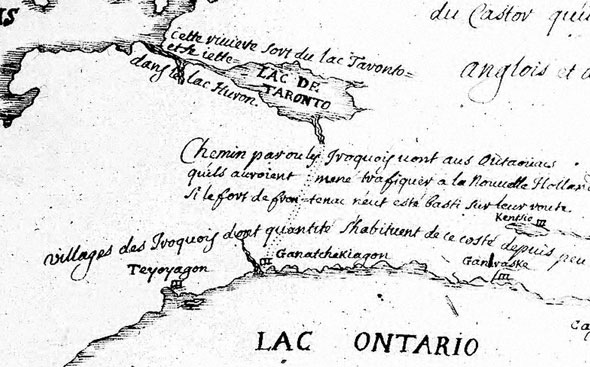
The word Toronto essentially traveled down the Portage Trail to the area that now bears its name.
The first colonial settlement on this part of Lake Ontario was Fort Rouillé, a French trading post depicted in drawings with a high wooden fence at what is now Exhibition Place, just beyond the foot of Dufferin Street.
The Seneca-Mohawk villages of Teiaiagon and Ganatsekwyagon (precise English spellings vary) were within today's city limits at the mouths of the Humber and Rouge rivers respectively.
The small complex - alternatively known as Fort Toronto - was founded in 1750 and contained a soldier's quarters, kitchen, a forge, and an ammunition store.
It and Magasin Royale, another earlier fortification on the Humber River near Old Mill, were built to attack vessels servicing a rival British trading post at Oswego, N.Y..
Rouillé was abandoned and burned by its own troops retreating at the end of the Battle of Quebec in 1759, a key battle that led to France ceding much of its land claims in North America.
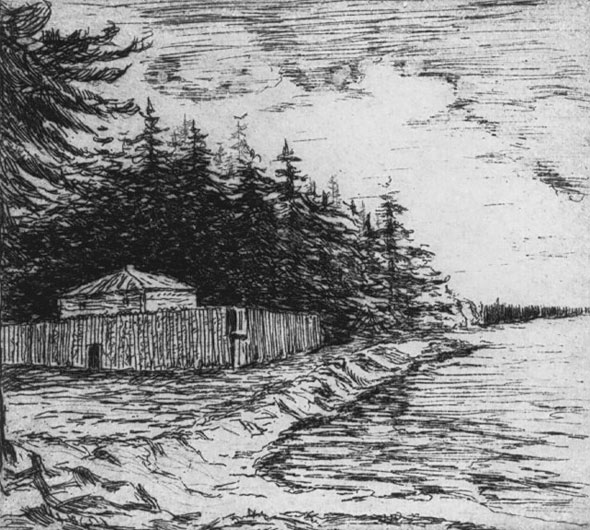
Early view of the Garrison at Toronto.
34 years later, John Graves Simcoe, ordered a garrison built at what is now Fort York at the mouth of Garrison Creek. The English military leader believed the location inside the enclosed Toronto harbour would be easy to defend.
The Islands wouldn't become separated from the mainland for another 65 years.
The town of Dublin, renamed York by Simcoe for Prince Frederick, Duke of York and Albany, the second son of then-King George III, developed on the waterfront to the east of the military base.
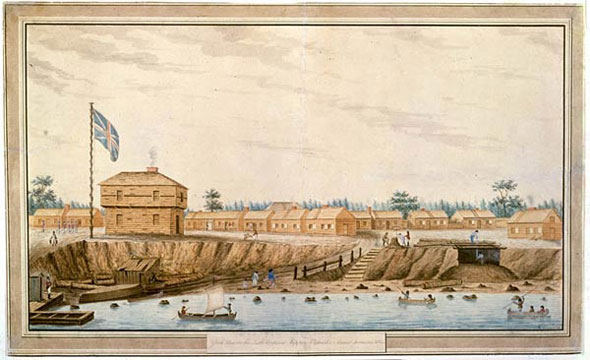
View of the Garrsion prior to what survives at present day Fort York.
Prior to the construction of Fort York, a second encampment would be built on the other side of Garrison Creek. This short-lived base was destroyed in 1813 during the Battle of York. During the fight, the British army were forced to retreat to Kingston, leaving its armed citizens in the streets.
Before abandoning their garrison, the British set light to their artillery storage area and a ship, the HMS Sir Isaac Brock, under construction at the docks. The gigantic explosion that tore through the fort as the gunpowder ignited killed 38 soldiers, including American leader Zebulon M. Pike, and wounded 222 more.
The Americans occupied York for less than a week before deciding to leave with goods looted from across the town. Despite the wishes of their leader, the Americans raided and burned several buildings, including the town's printing press and Legislative Assembly building for Upper Canada, located on Front Street between Berkeley and Parliament streets.
The town was retaken by the British when the Americans departed for their original position further down the shore. The returning troops built what is present day Fort York near the destroyed garrison and repelled several raids in 1813 and 1814.
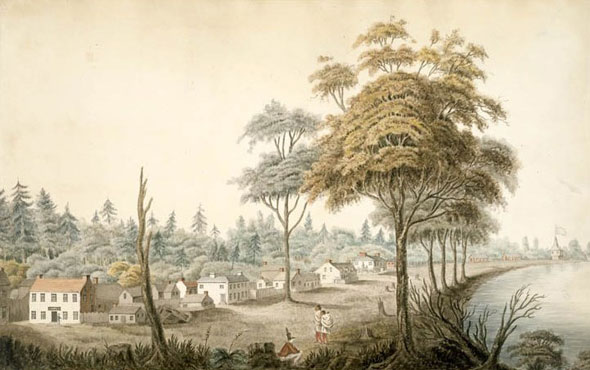
The modest beginnings of the town of York.
The town of York recovered from its temporary occupation and grew to surround the old fort. In 1834 the province's legislative council, the leaders of the area around what had become the largest city in Upper Canada, voted to incorporate the community as a city.
A group of local citizens thought then was as good a time as any to re-brand the community. The name Toronto, then recognized as an alternative name for the region, was favoured over York partly because the original York in England was considered so grim.
William Bent Berczy, a member of the Legislative Committee representing Kent, said Toronto had a "musical sound" and was " in every respect much better" than the original title. The others largely agreed, and the city of Toronto was officially founded that same year.
The York name lives on in East York, North York, York Region and the countless other York-related streets and communities in the GTA, while Toronto has continued to travel.
Cities named Toronto in the United States, Australia, and U.K. all derive their name from that narrow stretch of water near Orillia.
@ashtontekno. Writing by Chris Bateman.
Latest Videos
Latest Videos
Join the conversation Load comments







